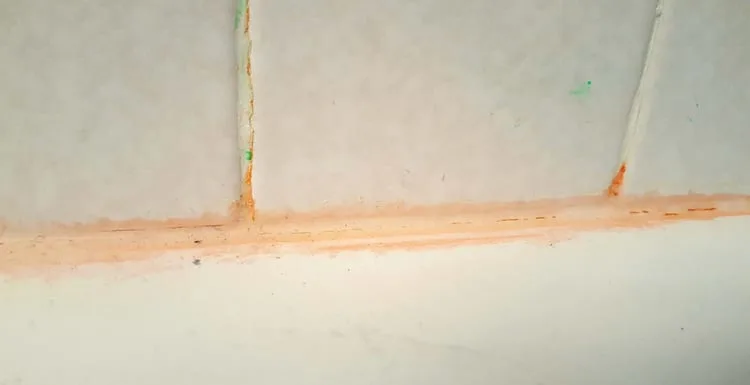Searching for a quick answer to “pink mold in shower?”
If so, keep reading.
We’ll cover this common problem, the reasons it happens, how to treat it, and when to call a professional.
Have Pink Mold In the Shower?
Pulling back the shower curtain, you notice putrid pink mold in shower crevices and corners.
It’s a disturbing sight in a space designed for cleanliness.
But before you mentally cue the Psycho movie theme, read up and find out what this pink mold really is.
To some extent, most molds are harmful. Some cause symptoms like headaches, respiratory problems, and sinus infections.
Others can be deadly. But which camp is pink mold in? How can you identify it? Is it safe to treat and clean it yourself?
Keep reading, because we’ve got answers to all these questions.
What Is Pink Mold?
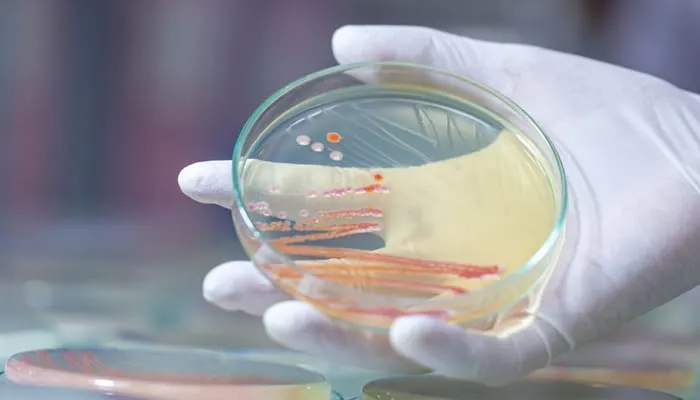
Rattiya Thongbumhyu/Shutterstock
Strictly speaking, the pink mold in your shower is not mold at all. It’s actually a type of bacteria, Serratia marcescens (S. marcescens), that colonizes in a slimy biofilm.
This bacteria produces a substance called prodigiosin that gives it its characteristic pinky-orange pigment. But why does this happen, and is there something wrong with your shower?
Well, not necessarily. S. marcescens loves showers and bathtubs because there’s plenty of moisture, it’s warm, and there is a steady supply of minerals from soap scum and fatty deposits from body wash for it to feed from.
This type of bacteria is not incredibly picky, though. You’ll also find it in other areas, including backed-up pipes, clogged drains, rocks submerged in water, etc.
For the rest of this guide, we’ll refer to S. marcescens as pink mold for simplicity. Sound good? Let’s dive in.
Identifying Pink Mold in Showers or Tubs
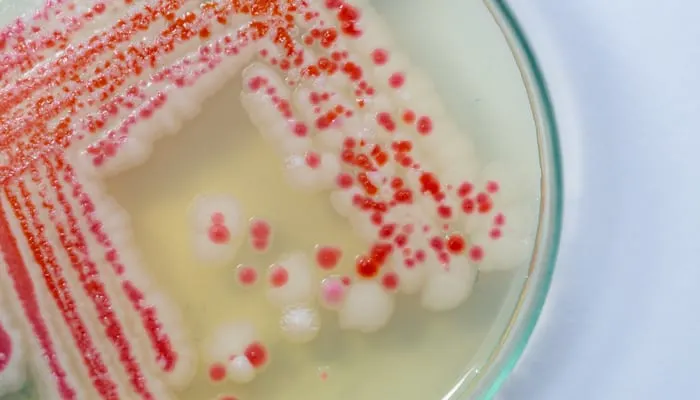
Rattiya Thongdumhyu/Shutterstock
It’s easy enough to identify pink mold in shower stalls and bathtubs. The telltale blush color often gives it away, and you’ll know it when you see it.
You can find pink mold on shower and tub walls, in the corners, around shower and tub tread mats and strips, in soap dishes, toilets, toothbrush holders, and even pet water dishes.
Anywhere that is warm, gets consistent moisture, and provides minerals is a potential breeding ground for pink mold. Pink mold will appear almost like a stain. It is thin and somewhat slick.
It is slimy to the touch. It grows in a film rather than a dense, textured pattern like many molds do. If you see pinkish (it can look more white or orange as well) growth in your shower, it’s probably pink mold.
Dangers of Pink Mold in the Shower
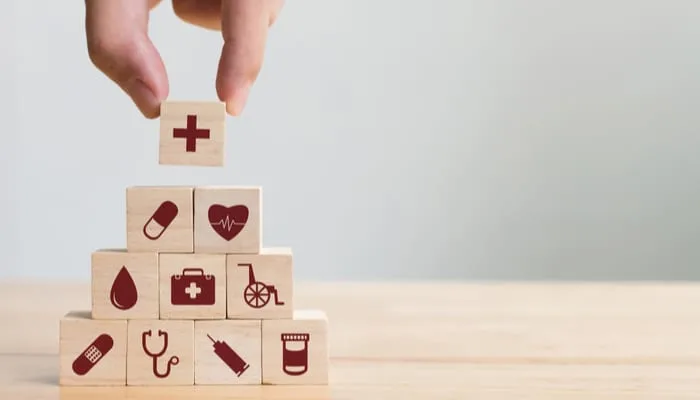
Monster Ztudio/Shutterstock
Don’t get too comfortable if you notice pink mold in your shower. It’s not quite as serious as the dreaded black mold, but it’s capable of causing serious health problems, illness, and disease.
Pink mold can affect you by getting into your body through mucous membranes (open eyes, mouth, nose, or genitalia).
Your risk of getting sick from pink mold increases if you have any open wounds, are elderly or very young, or have a compromised immune system. It’s also dangerous for pets that come into contact with it.
Pink mold can cause several health problems, including:
- Urinary tract infections
- Respiratory problems
- Pneumonia
- Septicemia
- Endocarditis
- Gastrointestinal issues
- Osteomyelitis
- Meningitis
One of the concerning things about pink mold is that it doesn’t always appear pink.
Temperature affects the color, so it can range in color from a very light, almost white pink that blends in with the shower to a deep red.
This is why it’s important to be proactive in keeping your shower and tub religiously clean. You may not notice when pink mold is growing there if it’s almost white.
Other Types of Pink Mold
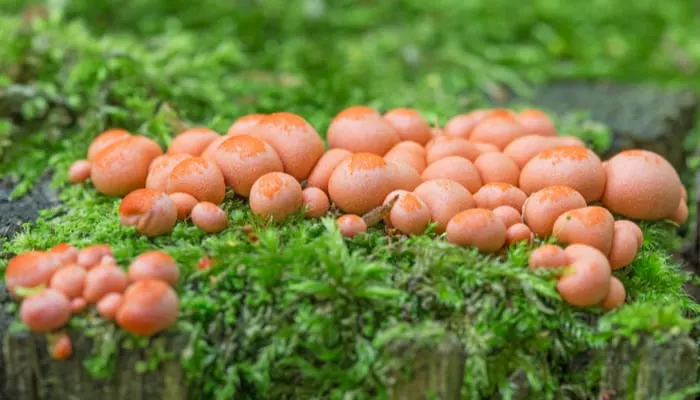
Ihor Hvozdetskyi/Shutterstock
The pink mold you might find in your shower is not the only kind of pink mold around.
It is, however, the only type you are likely to find in a bathroom. Below are three other types of pink mold you should know about.
- Acremonium. This family of whitish-pink to orange or gray molds is highly toxic and can be found in air conditioner drain pans, cooling coils, window seals, and humidifier condensation.
- Wolf’s Milk Slime (Lycogala epidendrum). You won’t find wolf’s milk slime mold in your shower. It only grows outside on dead logs.
- Cotton Candy Slime Mold (Arcyria denudata). Cotton candy slime mold grows on injured trees and decaying wood. It changes form multiple times throughout its life and can survive being dried out for years.
Treating and Cleaning Pink Mold in Shower
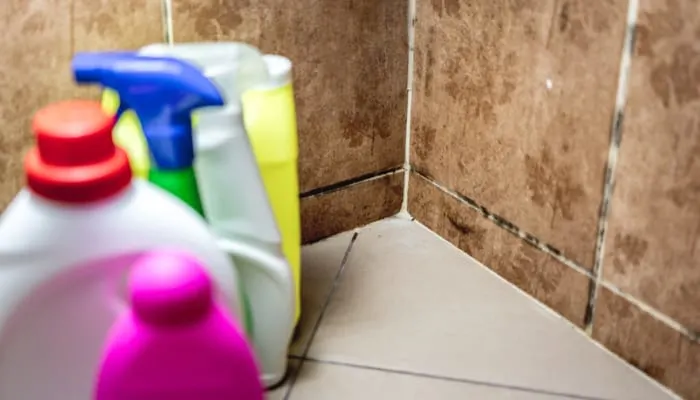
Svetlin Gospondinov/Shutterstock
If you think you have pink mold (S. marcescens) growing in your shower, you need to remove it as quickly as possible. Don’t bathe in the shower or tub until it’s been eradicated.
You risk serious health problems and disease if you come into contact with it. With gloves, a mask, and full-strength cleaning products, you may safely kill most of the pink mold.
But it’s important to kill all of it to keep it from regrowing into a full colony. There’s also a risk of coming into contact with it even with safety gear on.
For this reason, it’s recommended that you leave pink mold to professionals. Professionals have special cleaning equipment and techniques that kill the entire colony out of every nook and cranny in your bathroom.
They do this while keeping the rest of your home isolated, so it doesn’t spread to other areas. Here’s how a team of professionals will treat and clean your bathroom when you have pink mold.
Professional Mold Removal and Cleaning
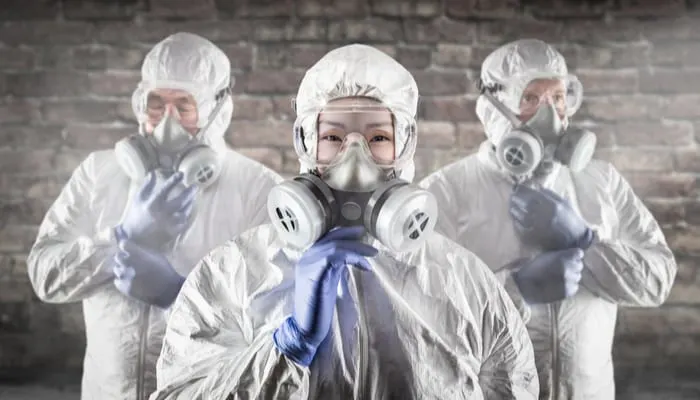
Andy Dean Photography/Shutterstock
- Suit up. Professionals always wear safety gear before tackling a mold or bacterial problem. This includes eye goggles, masks, and gloves.
- Dry the area. First, professionals will dry the area that is affected. Moisture is the main requirement for pink mold, so removing that makes it easier to target the pink mold. If you have any water damage to your walls or ceiling in the bathroom, those will be dried too with high-powered air movers, dehumidifiers, and air scrubbers.
- Contain the room. S. marcescens is an airborne bacteria, so it can easily travel to other areas of your home if it’s not properly contained during the removal and cleaning phases. Professionals seal the room being treated from the rest of the home with plastic sheets and tape over doorways and vents.
- Create negative air pressure. Negative air pressure allows air outside the room to flow in but won’t let air inside the room flow out. This further contains the pink mold in one room.
- Deep clean and disinfect the area. Professionals will save whatever they can by deep cleaning and disinfecting to remove pink mold. This includes fabric shower curtains, shower and tub walls, fixtures, sinks, etc. If pink mold has taken over your plastic shower liner or caulking, those may be removed to prevent bacteria from remaining and coming back stronger. If your ceiling or walls have damp sections that didn’t successfully dry out or are found to contain mold, those will be cut out.
- Make the needed repairs. If anything is removed, the team will replace it. A new shower liner, fresh caulking, and drywall repairs may be part of this final step. All materials and equipment will be cleaned up, and any removed materials will be properly disposed of away from your home.
Use our form to find a specialist near you who can safely remove pink mold from your bathroom. Our database has thousands of mold removal and cleaning specialists located all over the county.
When you submit the form, you’ll get a free quote from a specialist in your area.
These are licensed and bonded professionals trained to deal with any type of water damage, including pink mold in showers.
Keeping Pink Mold Away After Removal
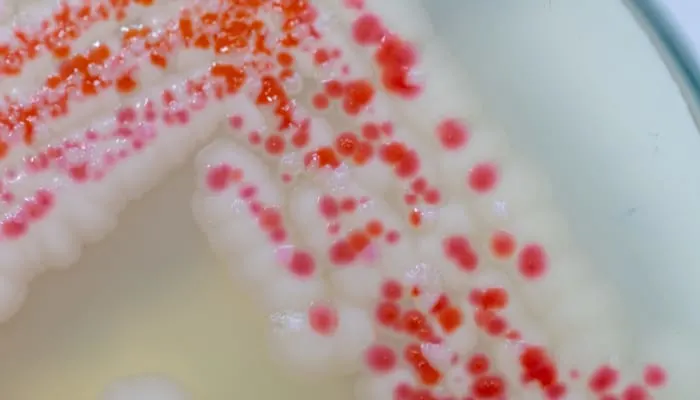
Rattiya Thongdumhyu/Shutterstock
Once you have a professional take care of the pink mold in your shower, you’ll be eager to keep the shower spotless and clean to avoid dealing with the problem again.
Here are four ways you can keep pink mold at bay for good.
- After a shower or bath, wipe the surfaces in the shower off with a dry cloth or squeegee. Don’t leave standing water anywhere in the shower. Wring all clothes and loofahs out completely and hang them to dry.
- Keep the door open with the air vent on during a shower or bath to allow excess moisture to escape rather than build up. If you have a window in your bathroom, open it after a shower to dry the room faster. If not, run a fan or dehumidifier in the room for a while.
- Regularly deep clean your shower and tub to remove soap scum, which pink mold uses as a food source, and keep S. marcescens from growing long enough to create a colony.
- Always let a professional remove pink mold, and don’t try to do it yourself. The dangers of contacting it are serious enough to cause professionals to don full safety gear and use commercial, specialized equipment when dealing with it. They’ll also make sure there’s absolutely nothing left of the pink mold, so it’s less likely to ever grow back.
You probably don’t have a mold removal specialist in mind (most people don’t). That’s why we’ve included our simple form in this guide.
Enter your name, email, and a brief summary of your problem (you can just say “pink mold in shower”) to get a free quote from a specialist in your area. You’ll be one step closer to getting rid of it for good!

